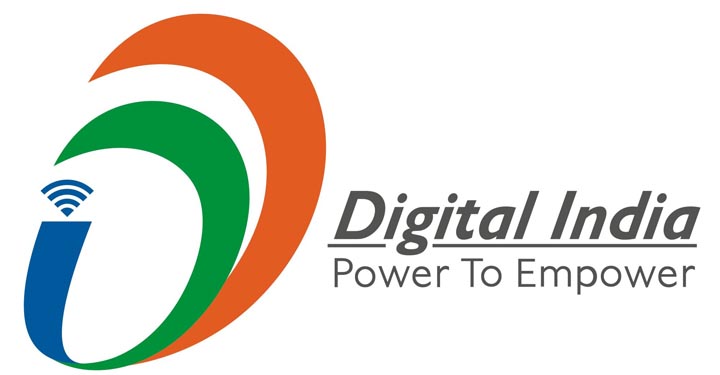By Shakti Sinha
The BJP fought the last national election on the slogan – maximum governance, minimum government. And while faith in the government has gone up, people are entitled to demand that the quality of governance improves. That it makes a difference to their lives. The bad news is that those who created huge expectations of big bang changes and revolutions are disappointed, and make their disappointment known through daily sermons that pass for newspaper columns and TV bytes. The good news is that on many fronts, quiet but substantive changes in processes and access are being introduced that would improve the quality of life of India’s citizens through improved, transparent and accountable governance.
Digital India represents one such approach that is both comprehensive and yet will touch the life of all citizens in the remotest village. It is a matter of great surprise, and regret, that despite being known for its computing and problem-solving skills, despite being seen as the back-office of the world, the coverage and effectiveness of our e-Governance initiatives is extremely patchy and disappointing. Countries with lower literacy levels, lower per capita incomes and greater challenges have moved far ahead of us in this field. And it is not because we started late, or did not invest adequate resources. The first desktop graced the tables of senior bureaucrats from 1986 onwards and big computer centres were built that processed data on implementation of public development programmes. Computer education in schools using mini-computers using BASIC language was also introduced at the same time. Since then many programmes were launched by centre and state governments, but other than laptop computers replacing Remington typewriters, and extensive use of personal email and now social media, the overall impact has been below-par.
Having said that, there have been successes e.g., rail and airlines ticket booking, updation & maintenance of land records in a number of states, tracking PDS foodgrains in a few and so forth. Over the last few years, separate initiatives like the National e-Governance Programme (NeGP), National Knowledge Network (NKN), National Optical Fibre Network(NOFN) etc have been launched that sought to place e-Governance within a larger public administrative framework keeping the citizen at the centre. Digital India takes this efforts one notch higher by seeking to build synergies from access to government using online/ mobile platform, extending the range of services and beneficiary oriented development and welfare programmes that would be covered to looking at e-education, e-health, skill upgradation using mass online open courses (MOOCs) and extending backward linkages to encouraging manufacture of e-goods by creating a favourable climate for investments in this field to take place.
While the vision is comprehensive and extensive, it does not propose to implement it either centrally or using GOI budget sources alone. There are many existing government of India programmes and funding streams that would carry on and be strengthened/ revamped. Importantly, it brings together efforts of different ministries and agencies. The state governments and the private sector have to play a key role in making it a success.
The failure of the earlier efforts primarily arose from the singular focus on acquisition of hardware. The placing of the computer on the desk of an officer became a prestige symbol. The allocation of computer was completely devoid of functional requirements. When computers moved in to the room of the personal assistants (PAs), they were at least used, if only as more efficient typewriters, akin to buying a truck to transporting a single book as by then computing powers had exploded. The situation is much better now but still limited – tracking of file movements, routine data uploading and spreadsheet functions, generation of bills by government utility, tracking government expenditures and cash flow etc.
The singular failure, which Digital India, seeks to address is process re-engineering. Overwhelmingly, even when application for PDS (ration) cards for example can be filed online at Common Service Centres (CSCs) and where after approval, cards can be collected at CSCs, the actual processing of the application is done manually on files. Physical files bound in red-tape and paper memos/ letters remain the primary source of information flow in government offices. This has to go, and in a specified time-bound manner. The transition to e-Governance should be used as an opportunity to relook at government processes, collapsing the examination and approval levels to make it efficient and accountable. Similarly all intra- and inter-government communications should be electronic. This would force senior decision-making levels to be e-friendly and skilled thereby bringing the system under control and focussed. Digital India makes this a priority.
The second key determinant of success of Digital India would be the building of a genuine public-private partnership. CSCs as the visible face of the government and the financial sector at the village level would only work if the privates sector is incentivised to make sufficient investment in physical facilities and in human resources. CSCs must not be undercut by running parallel government services, not allocating sufficient services or not paying them their fair service charges in time.
Lastly, Digital India should not be seen as belong to the Ministry of Electronics and Information Technology within government of India, as being a GOI initiative within States or a government efforts among the public. Stakeholders at different levels have to be energised, empowered and made accountable. It must be a true national effort at implementing a key national vision. PM Modi’s vision of digitising the vast field of governance and delivery reflects the aspiration and a mindset that is focused on the future and the progress of the Indian state machinery as a responsible, performing and responsive entity.
(The views expressed are the author's own and do not necessarily reflect the position of the organisation)

